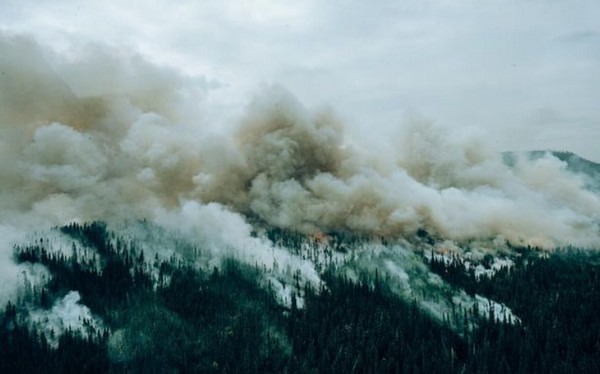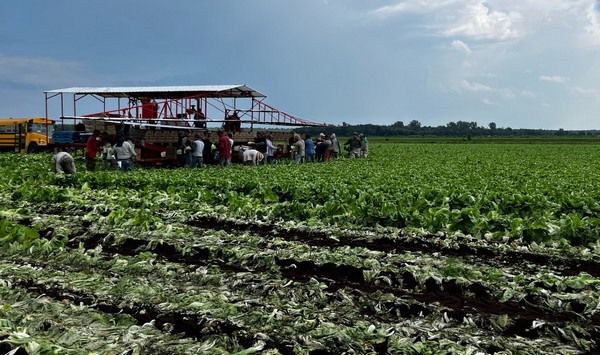Following weeks of air quality alerts throughout Quebec and subsequent regions of Ontario and U.S. states such as New York, Connecticut and Michigan due to recent wildfires in the province, last week Environment Canada lifted smog warnings that had been placed in large parts of the province for days. At last report though there were still 143 active wildfires in Quebec, though in all, Quebec’s forest fire prevention agency, Société de protection des forêts contre le feu (SOPFEU) reported that only three are considered out of control. While the wildfires began as early as March of this year, June is when intensity started to peak and is now lasting into July.
 Intensity started to peak in June and is now lasting into July. Photo: Société de protection des forêts contre le feu.
Intensity started to peak in June and is now lasting into July. Photo: Société de protection des forêts contre le feu.
So how have these air quality alerts and smog that hung over the province affected growing operations? Especially given there were also high outdoor temperatures and humidity happening at the same time. “Very warm days and bad air quality made working outside very difficult. Some days we had very bad air quality here. At one point, they said it was amongst the worst air quality in the world,” says Patrice Riendeau of Le Potager Riendeau Inc. in St-Rémi, Quebec, who estimates its growing operations are more than 300 kilometers away from the fires.
However, the biggest impact was felt by employees. “We didn’t want to work on those days or at least work as little as possible but it’s complicated because fields don’t take breaks. It was difficult breathing and you could hear people coughing so that was the hardest part for us,” Riendeau says, noting though that air quality alerts were not necessarily issued every day.
Amending work ways
To manage this, adjustments were made for field workers--they started earlier in the day or took longer lunch breaks. “We also provided masks on bad air quality days but with the warmth outside, not all employees wanted to wear them,” says Riendeau.
 “We provided masks on bad air quality days but with the warmth outside, not all employees wanted to wear them,” says Riendeau. Photo:Le Potager Riendeau Inc.
“We provided masks on bad air quality days but with the warmth outside, not all employees wanted to wear them,” says Riendeau. Photo:Le Potager Riendeau Inc.
How about the crops? Right now, Le Potager Riendeau Inc. is harvesting mostly lettuces such as romaine and romaine hearts though it’s about to begin harvesting celery as well. “We talked about whether it was impacting the crop and it is hard to say. We had that warm weather and a lot of humidity in the air which helped the growth of our fields,” he says.
He notes that while recently irrigation hasn’t been needed on crops, earlier in the spring in May the grower was irrigating due to a lack of rainfall at that time.
 For more information:
For more information:
Patrice Riendeau
Le Potager Riendeau Inc.
Tel: +1 (450) 454-9091
[email protected]
